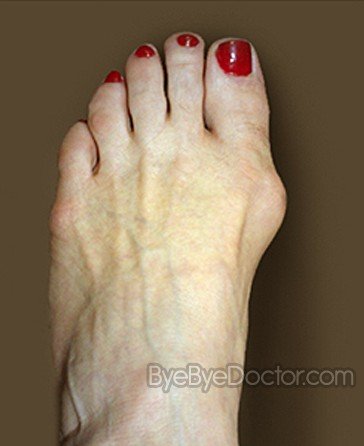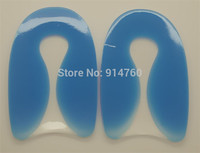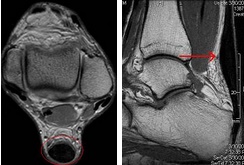There are actually two different types of leg length discrepancies, congenital and acquired. Congenital indicates that you are born with it. One leg is anatomically shorter in comparison to the other. As a result of developmental stages of aging, the human brain senses the step pattern and recognizes some variation. The human body typically adapts by dipping one shoulder over to the "short" side. A difference of under a quarter inch isn't very uncommon, require Shoe Lifts to compensate and commonly won't have a profound effect over a lifetime.

Leg length inequality goes largely undiagnosed on a daily basis, however this issue is very easily fixed, and can eradicate many instances of upper back pain.
Therapy for leg length inequality usually consists of Shoe Lifts. These are generally economical, commonly costing less than twenty dollars, compared to a custom orthotic of $200 if not more. Differences over a quarter inch can take their toll on the spine and should probably be compensated for with a heel lift. In some cases, the shortage can be so extreme that it requires a full lift to both the heel and sole of the shoe.
Back pain is the most widespread ailment affecting men and women today. Over 80 million men and women are affected by back pain at some point in their life. It's a problem which costs employers millions of dollars yearly as a result of time lost and output. New and better treatment methods are constantly sought after in the hope of lowering economical impact this condition causes.

Men and women from all corners of the world suffer the pain of foot ache as a result of leg length discrepancy. In these types of cases Shoe Lifts can be of very useful. The lifts are capable of alleviating any pain in the feet. Shoe Lifts are recommended by numerous skilled orthopaedic doctors.
To be able to support the body in a well balanced fashion, your feet have a critical task to play. Irrespective of that, it's often the most neglected area of the human body. Many people have flat-feet meaning there is unequal force placed on the feet. This will cause other body parts including knees, ankles and backs to be affected too. Shoe Lifts ensure that ideal posture and balance are restored.

Leg length inequality goes largely undiagnosed on a daily basis, however this issue is very easily fixed, and can eradicate many instances of upper back pain.
Therapy for leg length inequality usually consists of Shoe Lifts. These are generally economical, commonly costing less than twenty dollars, compared to a custom orthotic of $200 if not more. Differences over a quarter inch can take their toll on the spine and should probably be compensated for with a heel lift. In some cases, the shortage can be so extreme that it requires a full lift to both the heel and sole of the shoe.
Back pain is the most widespread ailment affecting men and women today. Over 80 million men and women are affected by back pain at some point in their life. It's a problem which costs employers millions of dollars yearly as a result of time lost and output. New and better treatment methods are constantly sought after in the hope of lowering economical impact this condition causes.

Men and women from all corners of the world suffer the pain of foot ache as a result of leg length discrepancy. In these types of cases Shoe Lifts can be of very useful. The lifts are capable of alleviating any pain in the feet. Shoe Lifts are recommended by numerous skilled orthopaedic doctors.
To be able to support the body in a well balanced fashion, your feet have a critical task to play. Irrespective of that, it's often the most neglected area of the human body. Many people have flat-feet meaning there is unequal force placed on the feet. This will cause other body parts including knees, ankles and backs to be affected too. Shoe Lifts ensure that ideal posture and balance are restored.



.jpg) Overview
Overview Symptoms
Symptoms Prevention
Prevention A bunion, also known as hallux valgus, is a painful deformity that develops at the base of the big toe. Bunions are caused when the big toe pushes and bends inward towards the other toes. This displaces the bones of the joint, causing it to protrude in a way that looks like a large growth. Bunions develop due to a variety of factors. Some people inherit feet that are more susceptible due to their shape and structure, having flat feet for instance. But bunions can be made worse by the wrong shoe, or by carrying extra weight or prolonged periods of standing or walking.
A bunion, also known as hallux valgus, is a painful deformity that develops at the base of the big toe. Bunions are caused when the big toe pushes and bends inward towards the other toes. This displaces the bones of the joint, causing it to protrude in a way that looks like a large growth. Bunions develop due to a variety of factors. Some people inherit feet that are more susceptible due to their shape and structure, having flat feet for instance. But bunions can be made worse by the wrong shoe, or by carrying extra weight or prolonged periods of standing or walking.


 A rupture of the Achilles tendon means that there has been either a complete, or partial, tear of the tendon which connects the calf muscles to the heel bone. Usually this occurs just above insertion on the heel bone, although it can happen anywhere along the course of the tendon. Achilles tendon rupture occurs in people that engage in strenuous activity, who are usually sedentary and have weakened tendons, or in people who have had previous chronic injury to their Achilles tendons. Previous injury to the tendon can be caused by overuse, improper stretching habits, worn-out or improperly fitting shoes, or poor biomechanics (flat-feet). The risk of tendon rupture is also increased with the use of quinolone antibiotics (e.g. ciprofloxacin, Levaquin).
A rupture of the Achilles tendon means that there has been either a complete, or partial, tear of the tendon which connects the calf muscles to the heel bone. Usually this occurs just above insertion on the heel bone, although it can happen anywhere along the course of the tendon. Achilles tendon rupture occurs in people that engage in strenuous activity, who are usually sedentary and have weakened tendons, or in people who have had previous chronic injury to their Achilles tendons. Previous injury to the tendon can be caused by overuse, improper stretching habits, worn-out or improperly fitting shoes, or poor biomechanics (flat-feet). The risk of tendon rupture is also increased with the use of quinolone antibiotics (e.g. ciprofloxacin, Levaquin).
 Achilles tendonitis is an inflammation of the Achilles tendon, which attaches the calf muscles (gastrocnemius and soleus) to the heel bone (calcaneus). Pain can be felt on the back of the heel at the attachment of the tendon, along the length of the tendon, or at the base of the calf where the tendon attaches to the muscle. Swelling is not always present with this injury, but it may occur in severe cases.
Achilles tendonitis is an inflammation of the Achilles tendon, which attaches the calf muscles (gastrocnemius and soleus) to the heel bone (calcaneus). Pain can be felt on the back of the heel at the attachment of the tendon, along the length of the tendon, or at the base of the calf where the tendon attaches to the muscle. Swelling is not always present with this injury, but it may occur in severe cases.
